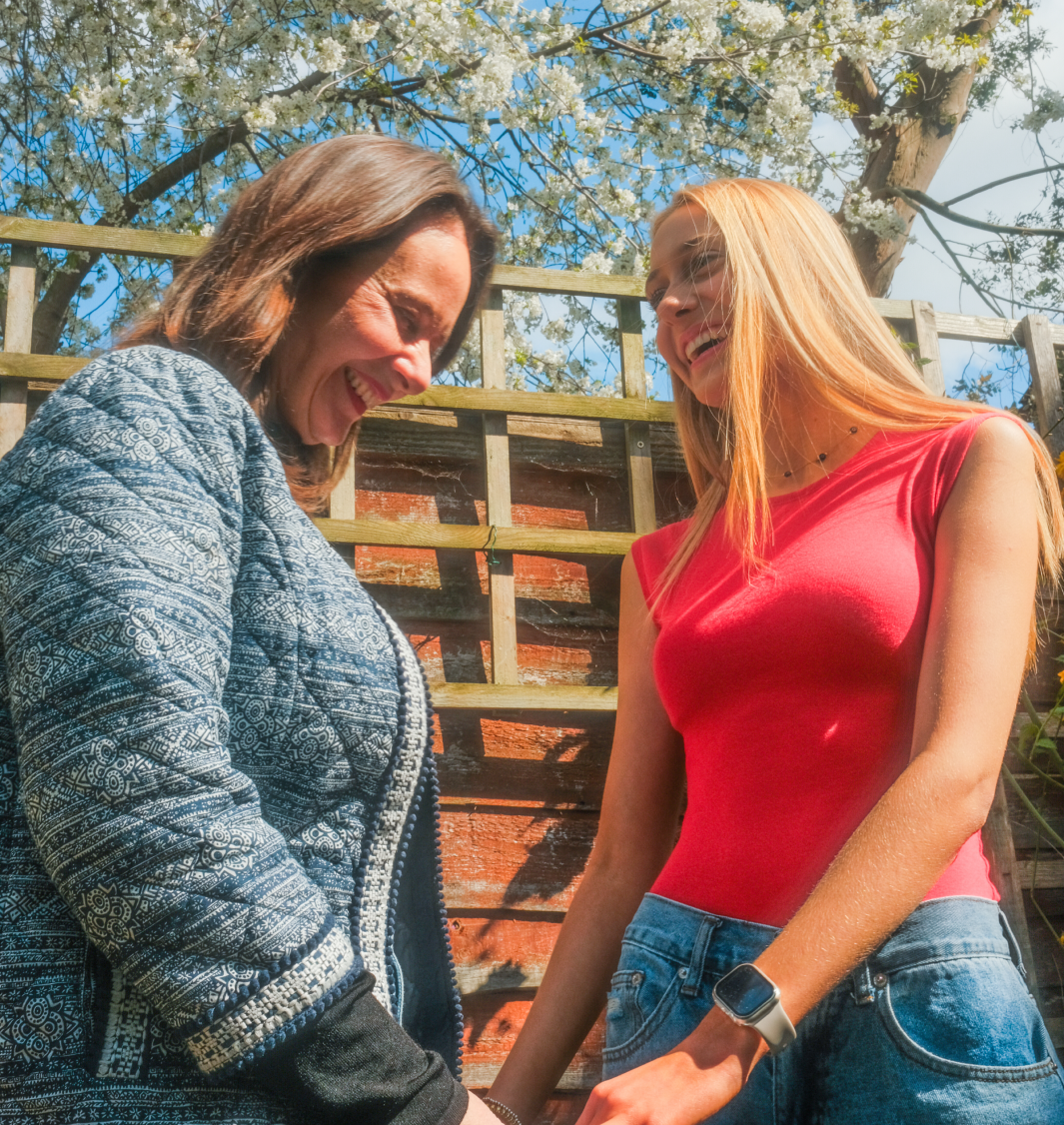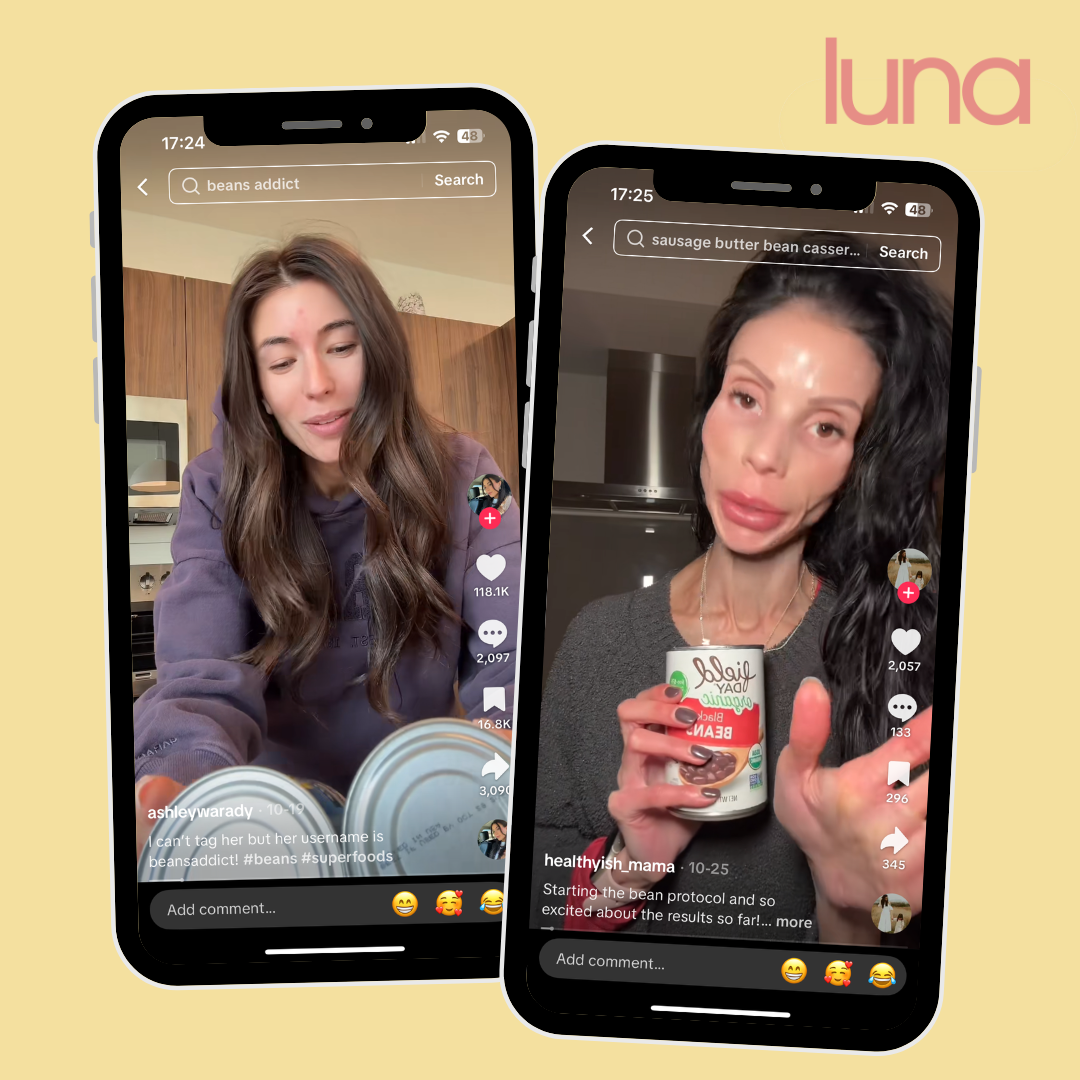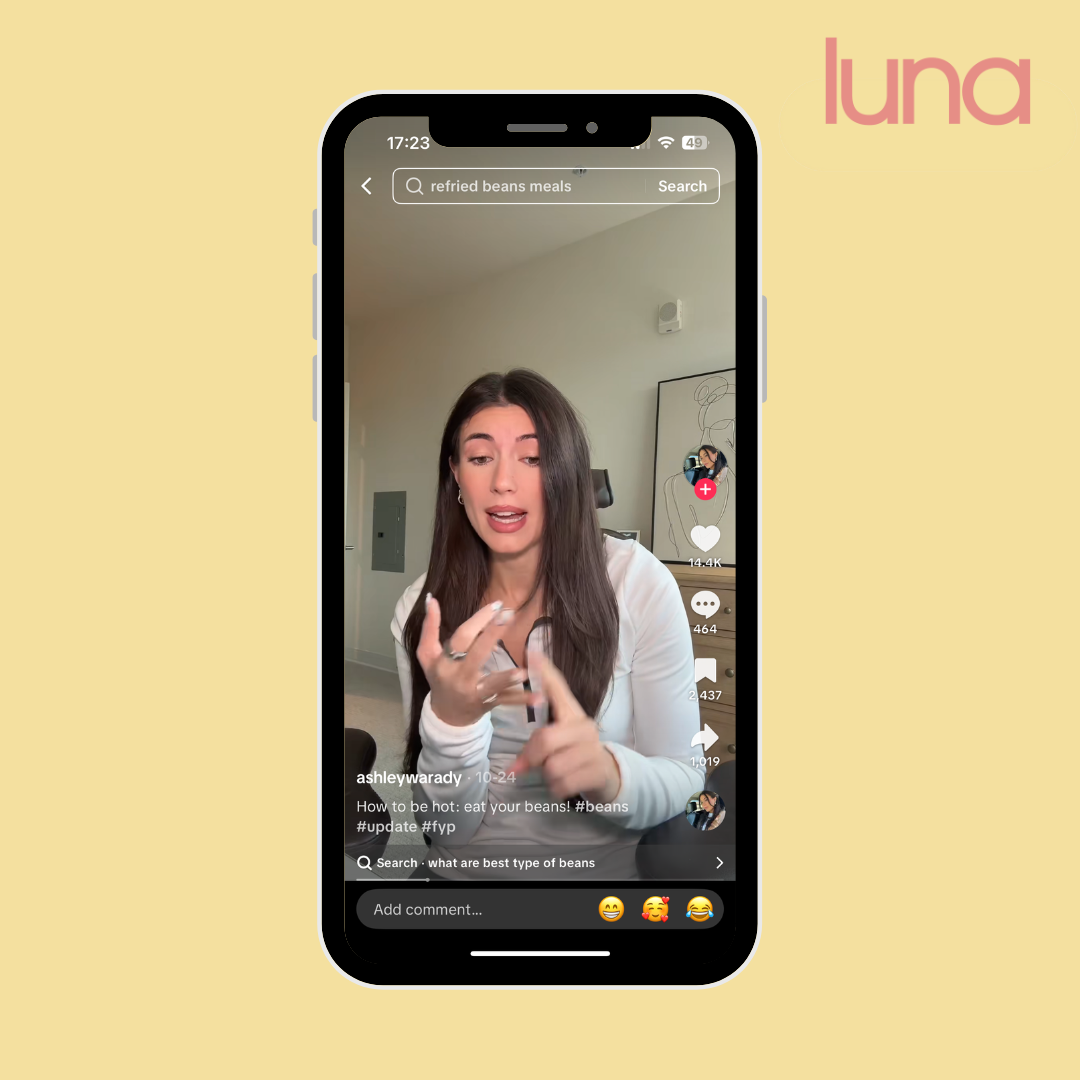
Is the “2 cups of beans a day” trend safe?
Explaining the “bean protocol” TikTok trend

Quick summary
- A viral TikTok trend claims eating 2 cups of beans a day can solve everything from bloating to anxiety
- Known as the “bean protocol”, it’s being shared by creators who say they’ve transformed their health by eating multiple tins of beans daily
- While beans and pulses are a healthy source of fibre and protein, the trend’s exaggerated promises could send confusing messages about nutrition, especially for teens
- Parents can use this as a chance to talk about balanced eating, critical thinking, and how trends like this shape body image online

What is the “2 cups of beans a day” trend?
Across TikTok, videos show creators proudly declaring:
“We’re eating beans. Two cups a day. Out of the can. To become hot.”

The “bean protocol” encourages eating large amounts of beans or pulses – chickpeas, lentils, kidney beans, black beans – supposedly to:
- Feel full all day
- Stop sugar and junk food cravings
- Lose weight
- Improve gut health
- Stop bloating
- Stop having anxiety and depression
- Stop joint pain
Some videos frame it humorously (“gas is the only issue!”), while others take a more serious tone.
And either way, they’re pretty convincing!
Creators often show tins of beans, colourful bean salads, or “how to be hot” captions implying that beans are the secret to beauty and feeling good.
Why are people doing the “2 cups of beans a day” trend?
According to TikToker @restorenutritionrd, the motivation behind the trend is simple:
“People are wanting to get more fibre and plant protein by eating beans. But nobody should feel like they have to eat a cup of plain beans every single day.”
So while the trend taps into genuine nutrition goals, it oversimplifies what a healthy, sustainable diet looks like.
It also links food to “attractiveness” which is not a positive association and may encourage unhealthy attitudes toward eating.

What the NHS says about beans and pulses
According to the NHS Eatwell Guide, beans and pulses do count towards your protein intake and one of your five-a-day.
But no matter how many you eat, they only count as one portion of fruit and vegetables.
The NHS recommends eating a variety of foods – not just pulses – across five groups:
- Fruit and vegetables
- Potatoes, bread, rice, pasta and other starchy carbohydrates
- Beans, pulses, fish, eggs, meat and other proteins
- Dairy and alternatives
- Oils and spreads
Eating “2 cups of beans a day” might provide fibre, but it could also lead to bloating or digestive discomfort, particularly for teens whose bodies are still developing.
Also, if your teen has IBS or stomach sensitivity, this much fibre could make symptoms worse rather than better.
Why experts are cautious about the “bean protocol”
Beans are great, but magic beans should be kept to fairy tales, not as part of restricted diets!
- It simplifies complex nutrition: health isn’t about one “magic” food – trends like this skip over the importance of balance and variety
- It can fuel body image pressures: when videos link “2 cups of beans a day” to being “hot”, it reinforces unrealistic expectations around food and appearance – similar to what we’ve seen in the Almond Mum trend
- It risks promoting disordered eating habits: repetitive, restrictive eating patterns – even of healthy foods – can mask anxiety around control and body image
- It ignores individual needs: teens have different nutritional requirements depending on age, growth, and activity – what an adult influencer eats may not be appropriate for them
- It spreads faster than facts: like other “quick fix” diet content – such as the saltwater flush trend – these videos often lack expert review or disclaimers
Could your teen be seeing this trend?
TikTok’s algorithm often pushes trends into “For You” feeds, including wellness trends, even if your teen hasn’t searched for them.
The “bean protocol” is appealing because it’s simple, low-cost and targets a lot of concerns teens have.
How to talk to your teen about it
You might not want to criticise or mock the trend as that can make teens defensive.
Instead, try gentle, curious conversation starters:
- “I saw some TikToks where people say eating two cups of beans fixes everything, what do you think about that?”
- “Do you think it’s realistic to say one food can do all that?”
- “What do you think a healthy meal looks like for you right now?”
If they seem engaged, you could share how the NHS recommends balance and variety rather than extremes.
Or, if you’d rather not single out this trend, you can use it as a bridge to talk about bigger themes – like body image, social media, and wellbeing.
For example:
- “Why do you think so many wellness trends focus on super specific things or control?”
- “What’s a food that makes you feel good physically and mentally?”
How luna can help
At luna, we know how confusing online wellness trends can be, especially for teens trying to feel healthy or confident in their bodies.
We have an anonymous questions feature where our members can ask us anything, and this often includes TikTok trends!
The luna app was created to help teen girls and people with periods learn about nutrition, mental health and body image without peer pressure or social comparison.
It’s expert-led, not influencer-driven – meaning your teen can get reliable, compassionate information about what “healthy” really means.
You can gift luna to your teen as a simple, positive way to help them:
- Build confidence in their body
- Learn what balanced eating looks like
- Feel supported through their changing relationship with food and social media
- Understand trends like the “bean protocol” before they take them too seriously

What parents can do next
- Keep an open line of communication: teens are more likely to ask questions if they feel they won’t be judged
- Encourage balance: beans are great, but part of a bigger picture that includes fruits, grains, and variety
- Stay informed: check in on emerging trends like the Crunchy Teen trend to understand where your teen might be getting ideas about food and wellness
- Empower, don’t restrict: instead of banning trends, give your teen tools to evaluate them critically – like luna
So, is the “2 cups of beans a day” trend safe?
Beans are brilliant and safe to eat for most people, but they’re not a miracle food to be solely relied on for body or mental health improvements.
The “2 cups of beans a day” trend shows how quickly simple ideas can become distorted on social media and turned into something obsessive and controlled.
As a parent, you don’t need to monitor every trend (that's why you have luna!), but just keep the conversation open, stay curious, and focus on helping your teen develop a healthy, informed relationship with food, their body, and the online world.
Ultimately, the best “protocol” is a balanced, sustainable diet, not control!

How we created this article:
luna's team of experts comprises GPs, Dermatologists, Safeguarding Leads and Junior Doctors as well as Medical Students with specialised interests in paediatric care, mental health and gynaecology. All articles are created by experts, and reviewed by a member of luna's senior review team.
Sources:
NHS "Eatwell Guide: how to eat a healthy balanced diet" | Accessed 04.11.25
https://www.nhsinform.scot/healthy-living/food-and-nutrition/eating-well/eatwell-guide-how-to-eat-a-healthy-balanced-diet/Find out about trends when your teen does
Sign up to our parent newsletter for emails on the latest teen trends, insights into our luna community and to keep up to date
By signing up, you are agreeing that we can use your email address to market to you. You can unsubscribe from marketing emails at any time by using the link in our emails. For more information, please review our privacy statement.